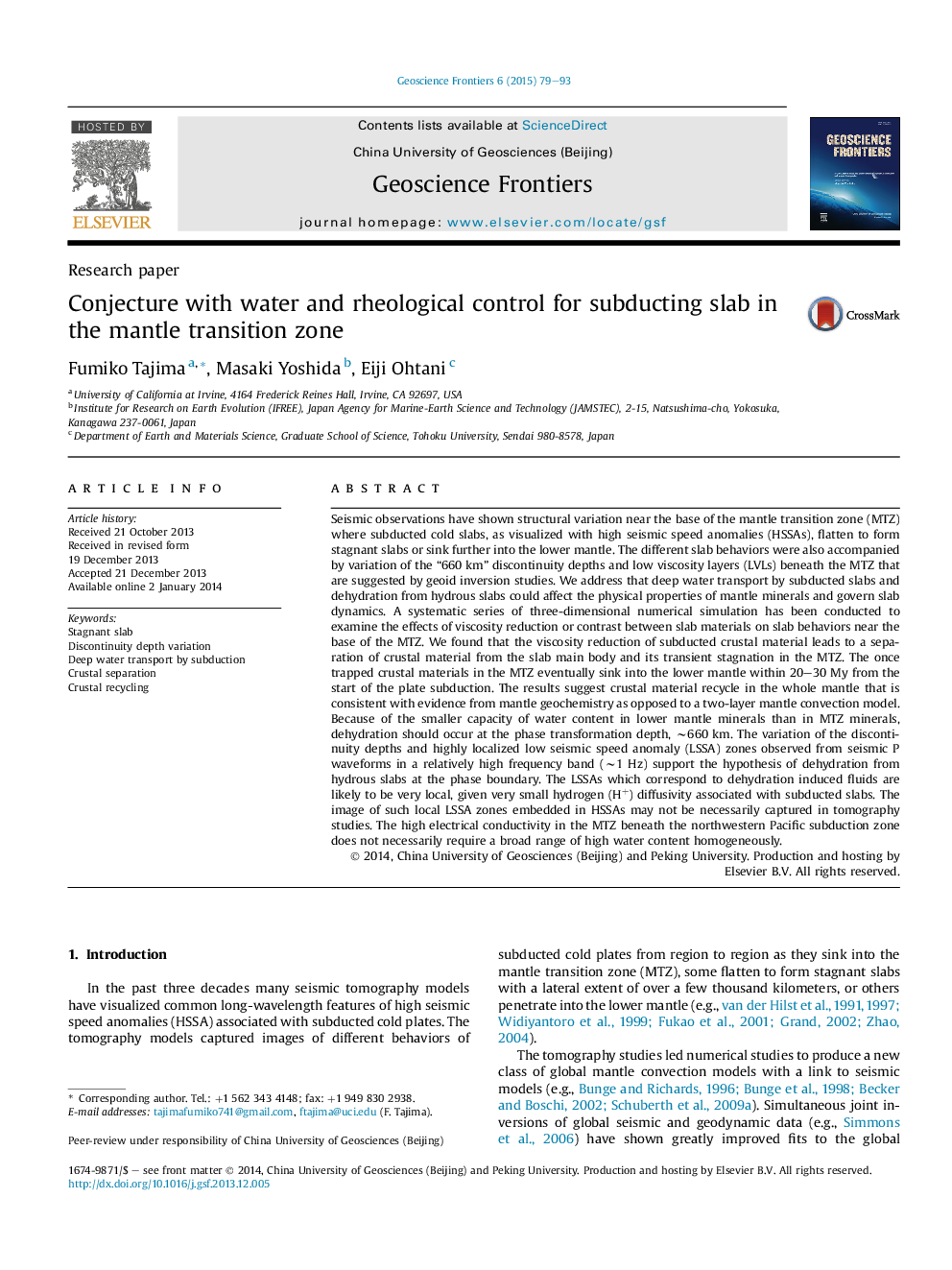| کد مقاله | کد نشریه | سال انتشار | مقاله انگلیسی | نسخه تمام متن |
|---|---|---|---|---|
| 4681559 | 1348857 | 2015 | 15 صفحه PDF | دانلود رایگان |
• Seismic observations determined structural complexity near 660 km in subduction zones.
• Deep water transport by subducted slabs is postulated to explain the observations.
• Viscosity reduction of crustal materials controls the behavior of subducted slabs.
• Crustal materials are transiently trapped in the MTZ and then sink into lower mantle.
• Crustal materials recycle in the whole mantle that is consistent with geochemistry.
Seismic observations have shown structural variation near the base of the mantle transition zone (MTZ) where subducted cold slabs, as visualized with high seismic speed anomalies (HSSAs), flatten to form stagnant slabs or sink further into the lower mantle. The different slab behaviors were also accompanied by variation of the “660 km” discontinuity depths and low viscosity layers (LVLs) beneath the MTZ that are suggested by geoid inversion studies. We address that deep water transport by subducted slabs and dehydration from hydrous slabs could affect the physical properties of mantle minerals and govern slab dynamics. A systematic series of three-dimensional numerical simulation has been conducted to examine the effects of viscosity reduction or contrast between slab materials on slab behaviors near the base of the MTZ. We found that the viscosity reduction of subducted crustal material leads to a separation of crustal material from the slab main body and its transient stagnation in the MTZ. The once trapped crustal materials in the MTZ eventually sink into the lower mantle within 20–30 My from the start of the plate subduction. The results suggest crustal material recycle in the whole mantle that is consistent with evidence from mantle geochemistry as opposed to a two-layer mantle convection model. Because of the smaller capacity of water content in lower mantle minerals than in MTZ minerals, dehydration should occur at the phase transformation depth, ∼660 km. The variation of the discontinuity depths and highly localized low seismic speed anomaly (LSSA) zones observed from seismic P waveforms in a relatively high frequency band (∼1 Hz) support the hypothesis of dehydration from hydrous slabs at the phase boundary. The LSSAs which correspond to dehydration induced fluids are likely to be very local, given very small hydrogen (H+) diffusivity associated with subducted slabs. The image of such local LSSA zones embedded in HSSAs may not be necessarily captured in tomography studies. The high electrical conductivity in the MTZ beneath the northwestern Pacific subduction zone does not necessarily require a broad range of high water content homogeneously.
Figure optionsDownload as PowerPoint slide
Journal: Geoscience Frontiers - Volume 6, Issue 1, January 2015, Pages 79–93
